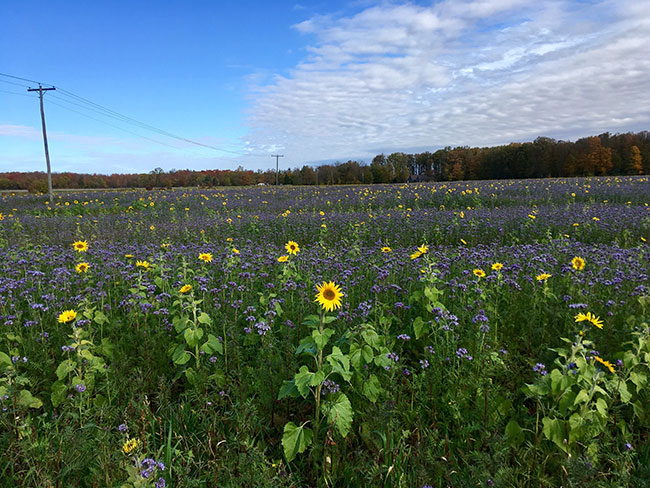
Features
From the Editor: Rolling with the punches
November 7, 2023 By Alex Barnard
 Mixed cover crop.
Photo courtesy of Gerard Cornelis Farms.
Mixed cover crop.
Photo courtesy of Gerard Cornelis Farms.
Let’s talk resilience. With the climate crisis breathing down our collective necks, as evidenced by the recent wildfires and droughts, every action must be weighed in the global balance of keeping the planet livable. Agriculture is at the forefront of a lot of these efforts. Many of the funding opportunities made available in the past couple years have had this delicate balance as a focus for the activities they will support. And many buzzwords are used to describe these activities or practices – regenerative, sustainable, climate-smart.
Whatever the label is, the goal – at least, in most cases – seems to be increasing the resilience of agriculture as a practice and a sector. Whether it’s breeding efforts and plant genetics, water management strategies, agtech innovations – most things are intended to improve how agriculture rolls with the proverbial punches.
Resilience is a common concept in agriculture – I’d hazard you don’t last long without it when there are so many guaranteed ups and downs and uncertainties. It’s a type of toughness, but an elastic one – the ability to bounce back from a setback or disappointment. Think of the fable about the oak and the willow – however strong something is, it’s more likely to break if it remains rigid in all circumstances.
While sticking to your guns is admirable in many cases and stubbornness helps in the face of the challenges agriculture brings, it can also lead to inflexibility. Ever heard of the sunk-cost fallacy? Being able to recognize when something doesn’t work – or no longer works well – and altering your approach is also a sign of strength. While it never feels good to fail, the ability to learn from what happened and use that knowledge to improve in the future is an important skill to develop. No one’s right all the time.
Is being prescriptive about the practices that are considered beneficial and thus deserving of funding the best way to improve agriculture’s resilience or carbon footprint? That’s debatable, though I do see the wisdom in starting with set parameters. Introducing too much choice or variety too early in the game can be an easy way to overwhelm people. But, at a certain point, there has to be support for those incorporating resilience and innovation in other ways, too.
As Donna Fleury’s article on page 8 indicates, innovation isn’t a one-size-fits-all idea, and farmers are working to balance a plethora of factors with every decision they make. For cost-share and incentive programs to be most useful to farmers, broadening and redesigning them to reflect all forms of innovation would provide greater benefits.
It can be difficult to know where to start. Each farm (and each farmer) is coming to the notion of resilience from a different starting point. Some may not have considered improving their operation’s sustainability beyond keeping the farm economically viable from growing season to season, while others have been incorporating cover crops, or improving soil health, or practicing integrated pest management strategies for years.
The thing about farming is that there’s always something to improve upon. As soon as you think you’ve got everything figured out – or at least a system that works for you – something new will come along, for better or worse.
Wherever you’re starting from, there’s something new to try. It can be big, or it can be something fairly simple – reducing the amount of paper you use in record-keeping, or asking someone you trust about the practices they use and considering where and how to incorporate them on your farm. A little time and effort now – especially over the winter months, when things are hopefully more relaxed – could lead to major dividends down the line.
And after all – what’s the downside of being more resilient?